
views
Following General Play Practices
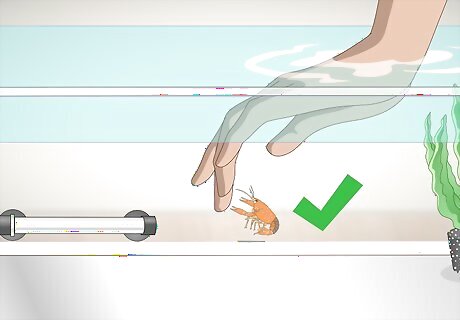
Start playing with your crayfish when it's young for best results. When did you purchase or catch your crayfish? How long have you had it for? The younger you start playing with your crayfish, the easier it will be to tame it and get it comfortable with you. If you're playing with an older crayfish, that's OK! Just remember that it will have stronger natural instincts and might run away from you—be gentle and take things slow! If you still haven't purchased or caught a crayfish, try to obtain one that's as young as possible.

Play with your crayfish at nighttime whenever possible. Since crayfish are nocturnal, they are most active shortly prior to dawn and after dusk. Try to play with them during these 2 periods to avoid disrupting their cycle. If you have to play with your crayfish during the day, keep the lights low. Crayfish have natural instincts to hide from light—this is when predators like catfish and bass come out in the wild.
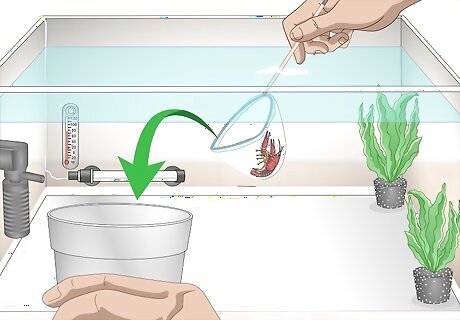
Remove your crayfish from its tank. Take your net and gently scoop your crayfish from the tank. Afterward, place it into a cup of water. Now, hold the cup over your tank and pour the water and crayfish into the palm of your hand. If the crayfish doesn't come out after pouring your cup, fill the cup with more water and try again. Keep tank temperature between 70 to 77 °F (21 to 25 °C). Crayfish activity declines during extreme temperatures, which means they will be less likely to play with you. Install a heater (fully-submersible is easiest) if you're having trouble keeping your tank at the right temperature. In general, 3 to 5 watts of heat per 1 gallon (3.8 L) of water is best.
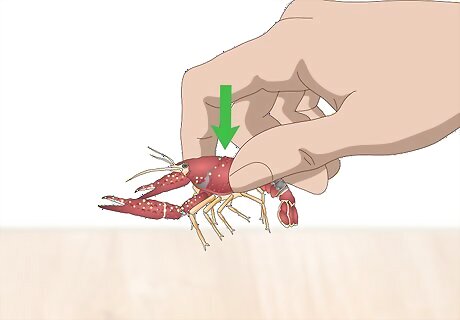
Hold your crayfish just behind its claws to avoid getting pinched. Anytime you pick up your crayfish, grip them gently with your thumb and forefinger right behind their arms—this is the only way to avoid getting pinched. At first, you'll probably notice it wave its warms and attempt to pinch you when you lift it up. Don't grab your crayfish by the tail or from the front. Remember that although pinches will hurt a bit, they're not dangerous and won't break your skin.
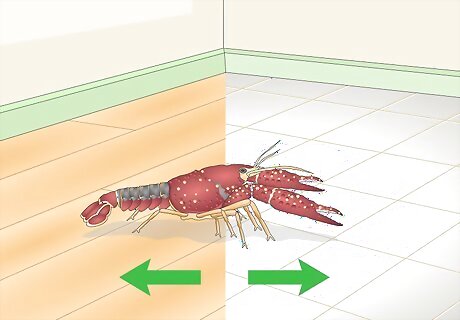
Play with your crayfish on a tile or wooden floor. A clean, damp, and solid surface is the best location to play with your crayfish. Just remember that getting sand, dust, or dirt in the chinks of its armor can be injurious and painful. If it gets dirty, put it back into the water to wash it off. Don't place your crayfish on a rug or carpet as these will dry out its gills. If the crayfish's gills become less shiny at any point when you're playing with it, put it back in the water right away.
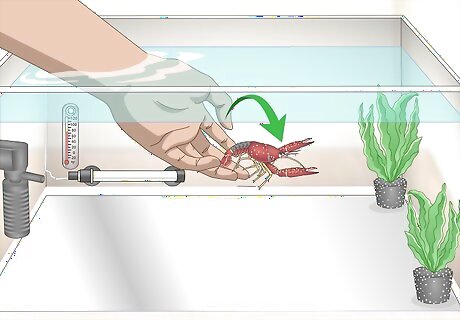
Put your crayfish back into its tank when you're done playing with it. Hold the crayfish in the palm of your hand. Now, place your hand down into its tank, taking care to keep your palms—and the crayfish—facing upward and the back of your hand downward. After your hand is submerged, release the fish and remove your hand from the tank. Move your hand very slowly when placing your crayfish back into its tank.
Playing with Your Crayfish

Talk to your crayfish! Make an effort to talk to your crayfish anytime you play with it. If it has a name, be sure to call them by it. Crayfish are very intelligent for arthropods and highly aware of their environments. Some—such as red swamp crayfish—can even learn to associate you with food. Feed your crayfish as you talk to it and call it by its name to build a better bond.
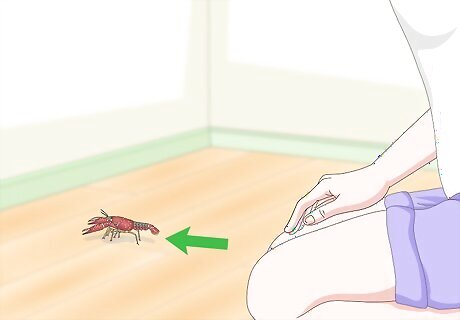
Let your crayfish crawl around on the floor. Place your crayfish into an open space and let it roam freely. Designate a specific portion of your floor to your crayfish and either block it off or keep an eye on it and prevent it from running into other areas.

Pet your crayfish on its back to comfort it. Extend your index finger and gently rub the back of your crayfish. Start from just behind its eyes—approximately at the line that runs laterally across its back—and drag your finger down just before its tail. Watch for your crayfish's reaction—if it doesn't like your petting and tries to run away, stop. Once it's comfortable with you, it will let you pet it. Note the spots on the back your crayfish responds positively to and focus on these areas. Take care not to apply too much pressure when you're petting your crayfish or you might hurt it.

Let your crayfish walk across your fingers. Start by placing the crayfish in the palm of your hand. Now, place your other hand above or underneath it so that all of your fingers run parallel to each other. Your crayfish should start walking across your fingers. Continue moving your hands so one is always above or below the other that your crayfish keeps walking across your fingers.
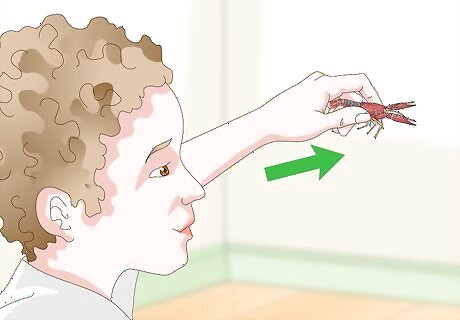
Fly your crayfish through the air. Grab the sides of your crayfish with your index and thumb. Now, slowly lift it into the air and move it around in a flying motion. Notice how your crayfishes arms extend into the air in front of it when you fly it through the air.

Use a blade of grass to play swords with your crayfish. Gather a few blades of grass from your yard and keep them ready for playtime. Use each blade as a sword and en garde! Move your sword around and let your crayfish try to grab it with its pincers.
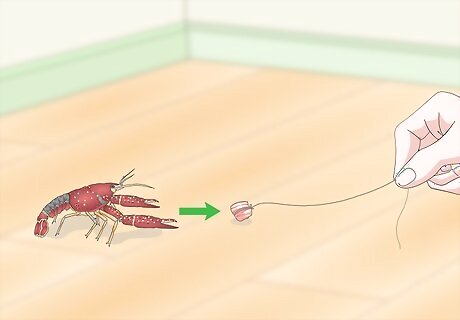
Let the crayfish chase a treat. Tie a frozen pea or small piece of meat to a string. Drag it slowly and let the crayfish try to get it. After getting your crayfish to run a bit, let it get the treat as a reward. Use frozen shrimp as the treat; crayfish love frozen shrimp. You can also use pellet-type foods, small shrimp or fish, and vegetable leftovers.

Give your crayfish natural environmental features to play with. Keeping water plants, rocks, or lengths of PVC pipe in your tank is important to give your crayfish something to play with. You can also put these items outside of their tank in a play area to give them something to do when you let it out. Gerbil tubes, enclosed containers, and hollow rocks are all great choices.




















Comments
0 comment